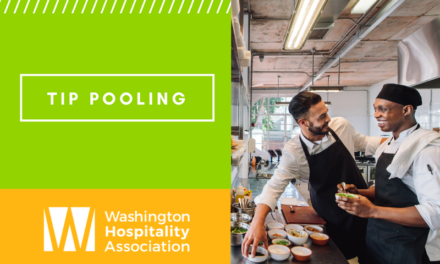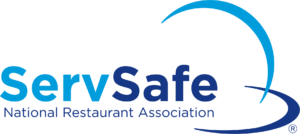OLYMPIA — This article was written in early 2020, and has lived on our members-only information hub. As we ease cautiously into 2021, we have decided to make this article publicly available, in light of the critical challenges facing our industry.
With the changes resulting from the pandemic, the need for counter service, for quick turnarounds and a hybrid model is greater than ever. If you’re looking at converting your service model, consider the advice below.
Should you change your model?
Change can be challenging, and a change as significant as adjusting your entire service model shouldn’t be made lightly. Phil Costello, 25-year industry veteran and COO of ALC Foods LLC, which operates a Zip’s location in Spokane, says if you are sincerely considering changing your service model, don’t wait too long.
“Who knows when we will be back to normal or what the new normal even looks like moving forward,” Costello said. “If you continue to wait you may be too late to capture the opportunities that are being experienced by others in the industry. Even if things return to normal, shifting back to your old routines might not be as profitable for a while. Many restrictions are still needing to be dealt with. New regulations are coming fast and furiously. Seize the opportunity to be profitable now rather than holding out for us to return to normal.”
This pandemic has demonstrated that flexibility is a virtue when it comes to running a business. Times are hard now, but no crisis lasts forever, and smart practices can position you well for the future.
“If you have the ability to shift your menu to a new concept without a complete disruption of your current model then there has really not been a better time,” Costello said. “This pandemic has shown us all the importance of being nimble and quick to pivot. By transitioning your current model, you may end expanding your operation post pandemic as well.”
Some restaurants have focused exclusively on the full-service model, and it may seem detrimental to your identity to make this kind of change. Costello urges that you should not be afraid to mix things up.
“What has made your operation great in the past can usually be translated to a take-out concept,” Costello said. “While the entire experience may be different, you now have the option to mix things up a bit and try new things. What new dish or appetizer can your team create that travels well? What level of service can you elevate with your front of the house folks who can make an impact on your customers. Reinvent yourself to stand out from the competition!”
Consider your profitability, your ability to open and what your competition is doing as you decide whether a service conversion is right for you.
Go with the flow
Acclaimed restaurant consultant Rick Braa emphasized three big considerations when approaching a service conversion, perhaps the most critical of which being your restaurant’s flow.
“A lot of times you go into restaurants, you have to look at chokepoints in the restaurant, that’s where the guests will be flowing over themselves,” Braa said. “You want a flow that is very smooth to the guests … it’s all got to work together, it’s all got to be smooth.”
With social distancing guidelines and mandates in effect, flow is even more critical — bear in mind the need to ensure or heavily encourage social distancing, with markers, signage and other such common best practices.
He urges restaurant owners to look at establishments like Chipotle, Panera Bread or Starbucks and take note of how they differentiate their approaches. Understanding how your customers will flow may enable you to incorporate that into your service and the design of your restaurant.
“Look at those (established, national) concepts and how well they are constructed because they’ve been doing it for decades,” Braa said. “They know what works and what doesn’t work.”
Some dramatic changes may be needed to improve flow, particularly if you are converting from full to limited service, such as taking down walls and possibly installing counters and other designs. Braa urged members to visualize their experience at counter-like services.
“Guests won’t tolerate being jerked around,” he said.
Keep it simple, be transparent
There’s a beauty to simplicity – and a flexibility too, particularly for restaurants considering moving from a full-service model to a more limited service one.
Just like with delivery, some food does better with a quicker turnaround than others. The menu should be designed to be simple on the kitchen staff, and executable with speed and sanitation in mind.
“Speed is the most important aspect of restaurants in my opinion, depending on the concept,” Braa said. “You go to a high-end steakhouse, you want to have a more relaxed experience, but you still want that service to be sharp, to be fast.”
While you consider your restaurant’s efficiency, the simplicity of its menu and what changes you’d make to improve both, never forget to include a very important person in those considerations – the guest. Braa said that the guest must be given ample and advanced notice of changes you intend to make to your service model.
For Mike Cavanaugh, owner of the Skagit River Brewery in Mount Vernon, this transition is one he has been considering, and one that he intends to undertake at a slow and gradual pace for the sake of his customer base.
“I think the obvious question is – should I just go to counter service? For us, for Skagit River Brewery, we’ve been in business 30 years,” he said. “I think the customer sees us as a full-service restaurant. So I think that transition has to be done very carefully.”
Cavanaugh has already taken some steps to prepare for the change, including streamlining his menu.
“That’s a hard process, people have an expectation level when they come to your place, and now they can’t get certain things and they want to know why,” He said. “We can’t afford stuff that goes to waste, so we have gone to burgers, pizza and barbecue… and some sandwiches and salads, just a pub menu, and streamlined that and then tried to make all of those items better.”
Without those expectations established, though, Cavanaugh said he may have approached his service model differently were he opening today.
“If I was opening a restaurant today, I would open it with counter service,” Cavanaugh said. “Full service is great, people love it, but you have to provide a menu and a product that can afford to pay a person $13.50 an hour.”
Braa was also clear: Whatever change to your service model you make, it must increase sales.
“When you take the complexity out of the concept, improve it at the same time,” he advised.
Technically speaking
Technology is the secret that makes a limited-service alternative to full service appealing, particularly if the goal is maximizing sales, according to? Correctly implementing technology into your service model can prevent lost sales opportunities and can empower the guest to become the leader of their dining experience.
Braa described some of the restaurants that would benefit from considering a service conversion – highly seasonal businesses that see large sales losses in off-seasons are one, as are restaurants whose value is in something besides their service, like a café with a really nice patio view or a seaside bistro.
If service isn’t your strong point, then your concept may stand to improve by reducing it. When in doubt, the best way to learn is to look and listen – that’s what Cavanaugh’s been doing.
“One of the best ways to learn is to eat at other people’s restaurants. I see the struggles, I see what happens when staff is not very knowledgeable, I see when the kitchen is running around with their head cut off and there’s too many people in there and the functionality of their layout isn’t correct,” Cavanaugh said. “I’ve gone and watched what other people are doing, watched them mess up, watched what they did well. It’s amazing … great service is immediately noticeable.”







